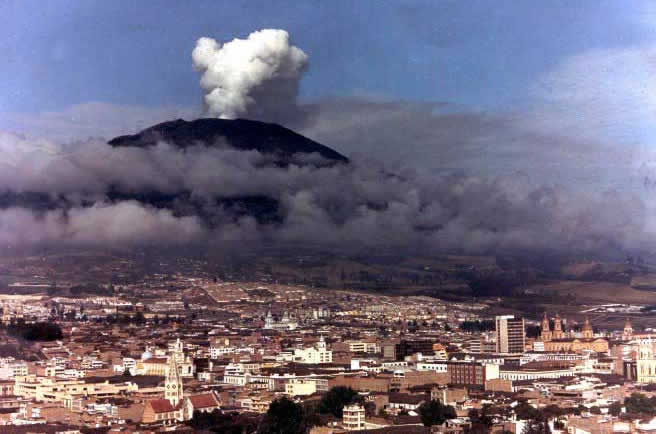Implementing a Project for Preparedness and Risk Reduction during a Volcanic Warning Phase
n August 2004, the Galeras volcano in the Nariño department, located in south western Colombia, began to show signs of renewed activity after ten years of calmness. The Colombian National Institute of Geology and Mines developed a volcanic risk map which indicated that more than 8,000 people reside in high-risk areas; that is, communities that could be reached by pyroclastic flows.
Based on this report, the Colombian Red Cross, jointly with the French Red Cross, carried out a project titled “Reducing the vulnerability of communities located in high-risk areas around the Galeras volcano.” The project was implemented between March 2006 and May 2007, and it was co-financed by the European Community Humanitarian Aid Office (ECHO) through its Disaster Preparedness Program (DIPECHO). The project is related to the Hyogo Framework for Action, specifically to priorities 3 and 5, with respect to raising awareness and carrying out preparedness activities with institutions and communities.
One month after this project began, volcanic activity at Galeras was upgraded from level 3, indicating changes in the volcano´s behavior, to level 2, meaning that an eruption could take place at any time. This level of activity continued during the last 5 months of 2006 and during the first half of 2007.
How to implement a disaster preparedness and reduction project during an emergency when the population at risk is partially evacuated?
In times of crisis, the vulnerability of communities and institutions is evident. For starters, a large part of the population in high-risk areas is unwilling to evacuate for several reasons, including distrust of institutions and lack of understanding surrounding the hazard. As such educating the population on volcanic hazards represents the first priority.

Volcanologists and the Education Commission of the Local Committee for Disaster Preparedness and Response have worked together to develop a message about the volcanic hazard that, while being as clear and simple as possible, would not lose its veracity. Banners were designed as educational materials to be used by 75 facilitators from the institutions and communities who were trained to conduct prevention workshops. Invitations to participate were made through all existing social structures, including community leaders, community mothers’ associations, community action boards, churches, regional transportation companies, parents, children, the elderly, health promoters, health care workers, students, and the community in general. It took six months to achieve the goal of educating the community about the existing hazard.
Even though a large part of the population may not evacuate, the Red Cross does not operate in high risk areas because of the potential danger to its volunteers. Thus, during the level 2 phase, all of the activities that had been planned in the communities were transferred to the temporary shelters built around the volcano. Risk maps and emergency plans were developed for the temporary shelters, with the idea that these tools would also be used by the community residents upon returning to their homes. As the community reflected on the strengths and weaknesses of the temporary shelters, there was a growing sense of belonging among the people. As such, little by little the population has begun to take care of the temporary shelters as if they were a part of their own community. Additionally, the activities carried out in the temporary shelters have been useful to foster a positive environment and motivate the population that has not yet evacuated.
The implementation of this project demonstrated that in the case of hazards that warrant preventive evacuation, disaster preparedness actions should include complementary activities during each warning level. Activities carried out with the evacuated population not only achieve the goal of prevention, but also support the environment, the improvement and care of evacuation sites, as well as their acceptance by the evacuated population.
For further information, please contact the French Red Cross in Colombia: crfcol@etb.net.co |

